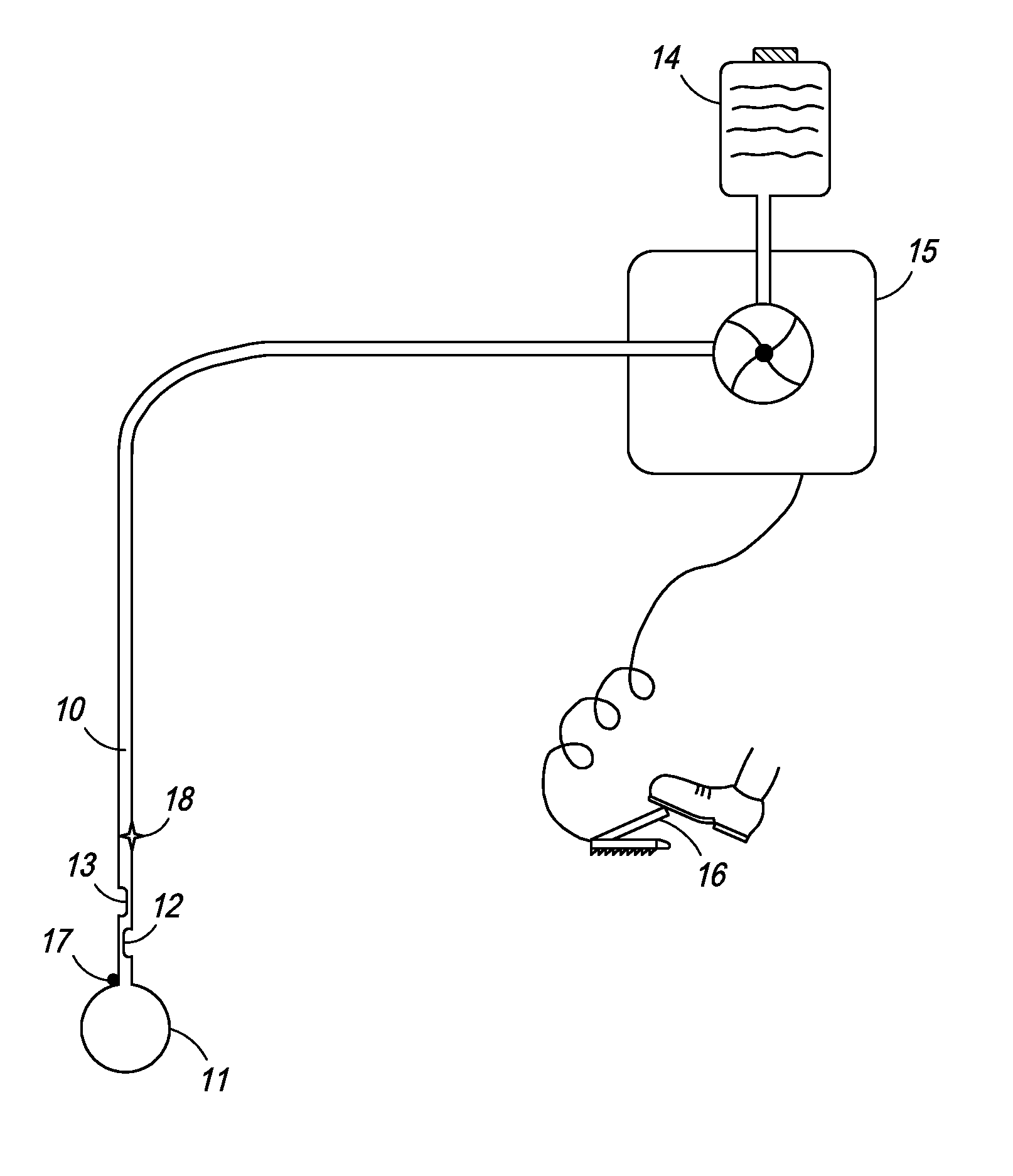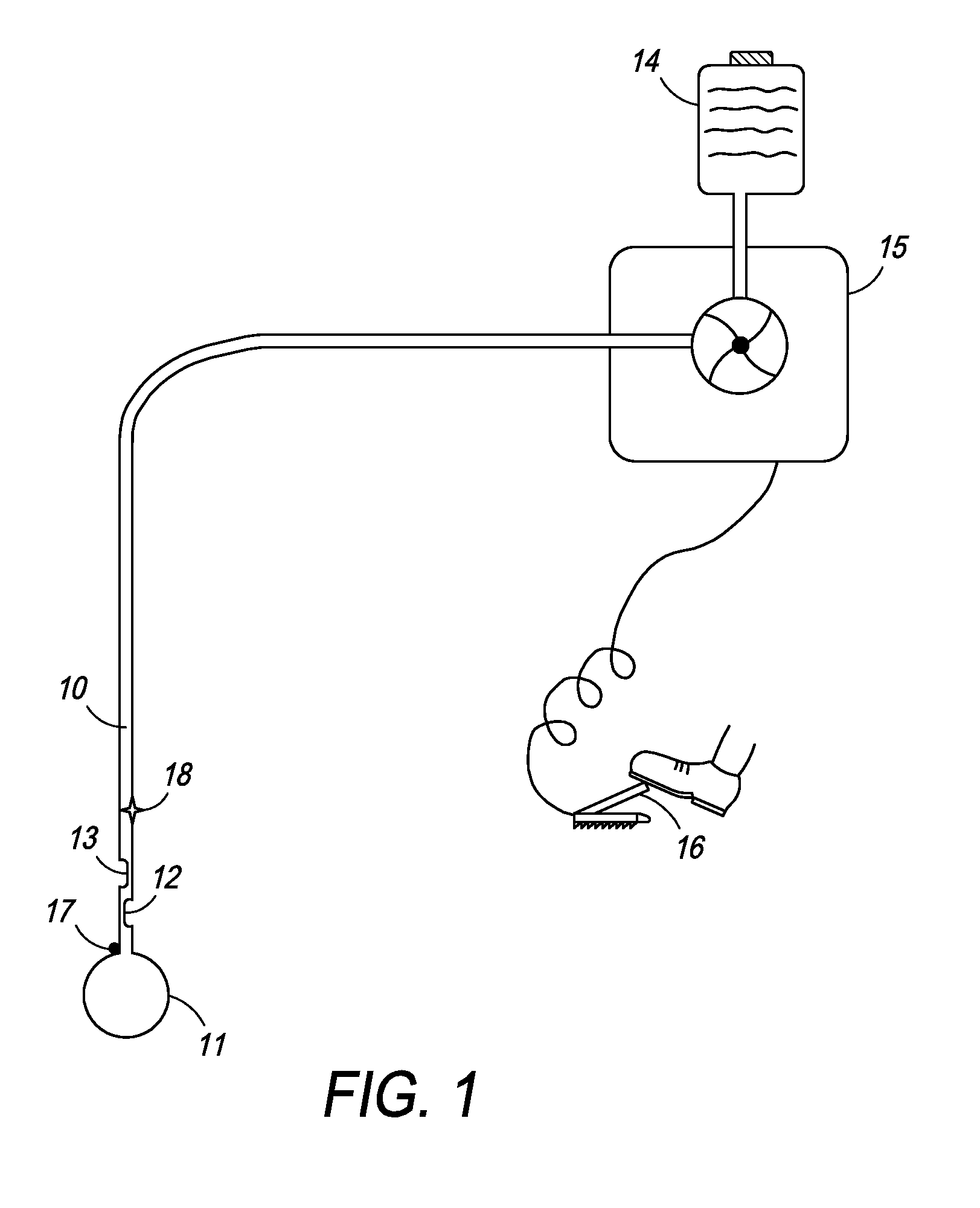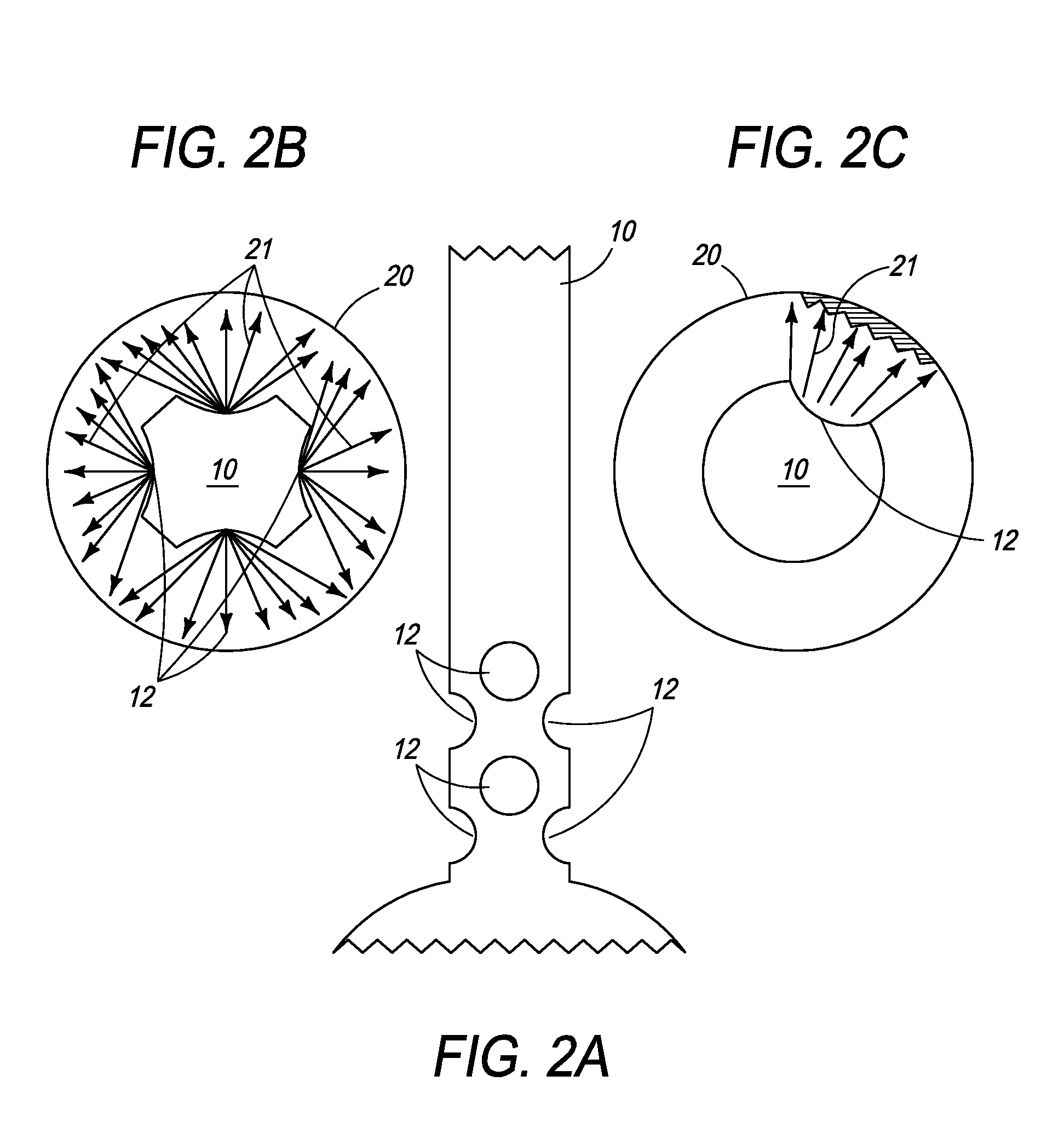Method and Apparatus for the Ablation of Gastrointestinal Tissue
a technology for gastrointestinal tissue and ablation, which is applied in the field of medical equipment and procedures, can solve the problems of high risk of complications, bleeding and perforation, and difficult removal of flat sessile polyps
- Summary
- Abstract
- Description
- Claims
- Application Information
AI Technical Summary
Benefits of technology
Problems solved by technology
Method used
Image
Examples
Embodiment Construction
[0057]The present invention provides an ablation device comprising a catheter with one or more centering or positioning attachments at one or more ends of the catheter to affix the catheter and its infusion port at a fixed distance from the ablative tissue which is not affected by the movements of the organ. The arrangement of one or more spray ports allows for uniform spray of the ablative agent producing a uniform ablation of large area such as Barrett esophagus. The flow of ablative agent is controlled by the microprocessor and depends upon one or more of the length or area of tissue to be ablated, type and depth of tissue to be ablated and distance of the infusion port from the tissue to be ablated.
[0058]“Treat,”“treatment,” and variations thereof refer to any reduction in the extent, frequency, or severity of one or more symptoms or signs associated with a condition.
[0059]“Duration” and variations thereof refer to the time course of a prescribed treatment, from initiation to co...
PUM
 Login to View More
Login to View More Abstract
Description
Claims
Application Information
 Login to View More
Login to View More - R&D
- Intellectual Property
- Life Sciences
- Materials
- Tech Scout
- Unparalleled Data Quality
- Higher Quality Content
- 60% Fewer Hallucinations
Browse by: Latest US Patents, China's latest patents, Technical Efficacy Thesaurus, Application Domain, Technology Topic, Popular Technical Reports.
© 2025 PatSnap. All rights reserved.Legal|Privacy policy|Modern Slavery Act Transparency Statement|Sitemap|About US| Contact US: help@patsnap.com



